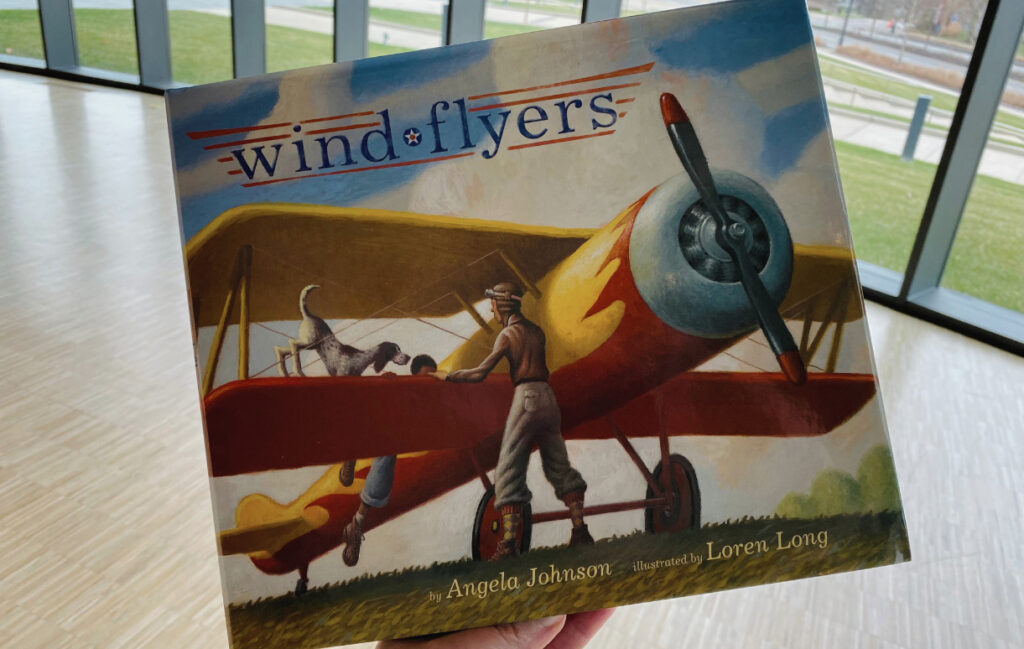
With the opening of our latest exhibition, Lost Man Blues: Jon Schueler – Art & War on January 12, 2024, we are reading Wind Flyers by Angela Johnson. It features the story of a Tuskegee Airman who served in the 332nd Fighter Group of the U.S. Army Air Forces during World War II. These men formed the first group of Black military pilots and support personnel.
During combat, the Tuskegee Airmen were largely responsible for protecting American bomber planes, including the B-17 Flying Fortress. They were known for their exemplary skills and abilities, and they lost far fewer bombers to enemy fire than the average fighter escort groups. * Though they served in different units from Schueler, the B-17s they protected were the same type of plane that Schueler served on as a navigator from 1942 – 1943 and his experience in the skies over Europe heavily influenced the artwork in Lost Man Blues.
Wind Flyers tells the story of a young boy’s great-great-uncle and his desire to be in the sky from an early age. This dream to be a “wind flyer” takes him from the soil of Tuskegee, Alabama to the skies above Europe and back. When coupled with viewing the art of Lost Man Blues, this book offers a different perspective on an individual’s experience as an Army aviator in World War II.
*The author of this books notes that the 332nd was the only escort group that never lost a single bomber to enemy fire. While the Tuskegee Airmen had an exceptional record for protecting bombers, they did have some bombers shot down. This information comes from a historical research paper by Dr. Daniel L. Haulman of the Air Force Historical Research Agency titled: “Tuskegee Airmen-Escorted Bombers Lost to Enemy Aircraft.” By including this note, the NVMM does not mean to diminish the accomplishments of the Tuskegee Airmen in any way and encourages everyone to learn more about the experiences of the Tuskegee Airmen.



